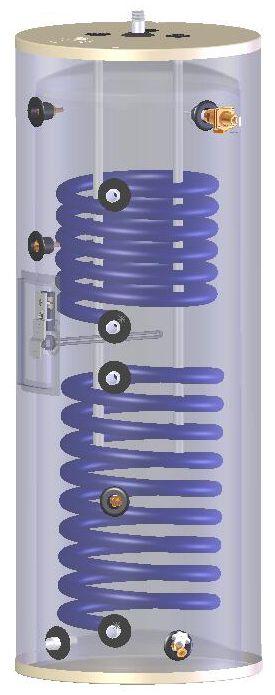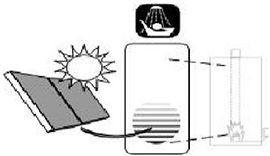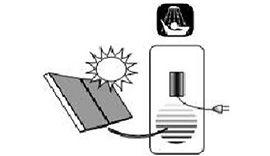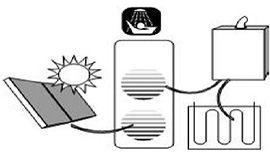SOLAR THERMAL STORAGE TANKS
SOLAR THERMAL STORAGE TANKS
Solar water tanks are used in for solar heating to act as buffer tanks. When the sun is shining, the water will be heated in the solar storage tank for later use, most commonly in the evening. Most solar thermal tanks contain a heat exchanger to separate the potable water from the solar heating solution (Water/Glycol) and have a great insulation value that can retain the heat for day.
SolarStor Solar Water Tanks are North Americas only complete solar water tanks and are UL and CSA certified. Unlike other tank manufacturers, SolarStor tanks come complete with two large internal heat exchangers and a back up 4.5 Kw electric element. The SolarStor tank has a rated heat loss of less than .8 degrees F/ Hour!
This thermal tank is suitable for all forms of solar heating systems including domestic hot water, solar home heating, solar pool heating and hot tubs! With this tank you can easily expand your solar heating system at any time without new equipment!


SolarStor Thermal Tanks: Heating Configuration OPTIONS

Solar Pre Heat with
an existing heater
The solar heats the domestic hot water using an internal bottom heat exchanger. The Pre-Heated water then enters a second hot water heater or on demand water heater to top it up to final temperature.

Solar Heater with
an electric back up
The solar heats the domestic hot water using an internal bottom heat exchanger. If the domestic hot water is not hot enough a 4.5 Kw back up electric heating element will turn on. This ensures you don’t need a second tank.

Solar Water Heater
with Second
Heating zone
Similar to the other option, the solar heats the water via the bottom internal heat exchanger. However, this tank also has a top heat exchanger which can be used removing energy to a 2nd home heating loop such as radiant floor heating.
SolarStor Thermal Tanks:

Solar Pre Heat with
an existing heater
The solar heats the domestic hot water using an internal bottom heat exchanger. The Pre-Heated water then enters a second hot water heater or on demand water heater to top it up to final temperature.

Solar Heater with
an electric back up
The solar heats the domestic hot water using an internal bottom heat exchanger. If the domestic hot water is not hot enough a 4.5 Kw back up electric heating element will turn on. This ensures you don’t need a second tank.

Solar Water Heater
with 2nd Heating zone
Similar to the other option, the solar heats the water via the bottom internal heat exchanger. However, this tank also has a top heat exchanger which can be used removing energy to a 2nd home heating loop such as radiant floor heating.

SIZING A SOLAR WATER TANK
SIZING A SOLAR
WATER TANK
Sizing the volume of a solar thermal buffer tank is a crucial step in designing an efficient and effective solar hot water system for your home. The tank's size should align with the number of people in your household to ensure an adequate supply of hot water without excessive heat loss or system inefficiencies.
To determine the appropriate tank size, start by estimating your household's hot water usage. On average, a person uses 20-30 gallons of hot water a day. So a family of four may require a buffer tank with a capacity of around 80 to 120 gallons (300 to 450 liters). However, this can vary based on factors like climate, local sunlight availability, and water usage patterns.
Consider factors such as the number of showers, baths, and the use of hot water for laundry and dishes. Additionally, factor in any planned future increases in household size or hot water demand.
By carefully matching the tank's volume to your household's hot water requirements, you can maximize the efficiency and performance of your solar thermal system while ensuring a consistent supply of hot water for your family.
Contact Us for More Information on Solar Heating
Enhance your experience with energy-efficient heating solutions from Northern Lights Solar Solutions. Whether you're looking for product details, installation guidance, or order assistance, our team is here to help. Enjoy eco-friendly, cost-saving technology designed for sustainable heating.
Get in touch, no matter where you’re at in your project plans. We’d be so happy to help!
Contact Us for More Information on Solar Heating
Enhance your experience with energy-efficient heating solutions from Northern Lights Solar Solutions. Whether you're looking for product details, installation guidance, or order assistance, our team is here to help. Enjoy eco-friendly, cost-saving technology designed for sustainable heating.
Get in touch, no matter where you’re at in your project plans. We’d be so happy to help!








